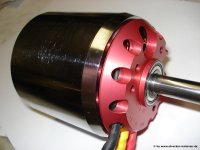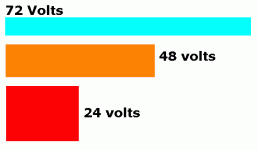Toorbough ULL-Zeveigh said:+1
Might I request that u also correct in the appropriate thread about mixing chemistries,
http://www.endless-sphere.com/forums/viewtopic.php?f=14&t=1637&p=22955
safe's repeated assertion of how it's okay to run different chemistries tied in series as a normal practice.
I could be wrong, but my understanding from everything I've been taught or read, I think he's crossed the line from laughable to dangerous (to others & not just himself this time), as a little knowledge can be, & would like your view on this.
i think the question has been answered in that thread, but basically, if you have two batteries of different voltages and one is enough higher than the other to overcome the charge potential, that one battery will drain into the other one, possibly overcharging and damaging it. battery voltages vary with time and temperature, and different technologies have different charge potentials. for example, if your sla is at 13v your other battery will need to be at 15v or so before it discharges into the sla, but if you have a LiFePo4 battery the other pack only needs to be 50 mv or so higher than it to discharge into it.
the safest way to combine batteries of different voltage is to use a dual diode with a common cathode. you put one battery string on each anode and the cathode becomes the output. if you use a 40CPQ100 it will handle 40A and 100v and will cost you about half a volt. with the diode whichever battery has the higher voltage powers the load. what happens in actual use is that you draw power from the higher voltage battery until it sags down to the level of the lower one, then the lower one supports the load and the batteries will share with no possibility of one discharging into the other.
in the case of NiCd and SLA, if the voltages are very close you might get away with connecting in parallel, NiMH not so good, lithium definitely don't do it. If your SLA discharges into the lithium it could destroy it and kill you and some innocent bystanders.
I leave the dual diode on my bike all the time with the second tap available so i can carry any extra battery i want as an automatically shared reserve tank. usually i supplement my 48v 20 Ah NiMH with a 66v A123 pack, and the A123 pack runs down a bit before the NiMH starts to work at all, then they share for awhile until the A123 gets low and the NiMH takes over. If i did not have the dual diode the A123 pack would destroy the NiMH when i connected them.







